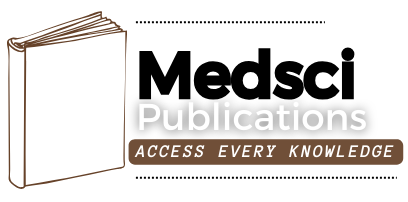How To Do Critical Appraisal of Any Research Article
Keywords:
Research article, critical appraisal, academics, qualityAbstract
In both biomedical research and medical academia, research publications serve a critical role. There are a huge number of research publications published all around the world. However, only a small percentage of them are good and have any research or academic worth. So, properly evaluating published publications has become vital in this circumstance. This article is intended with medical graduates and postgraduates in mind, in order to clarify them how to critically evaluate research publications. It may also be used to write published research articles in an indirect way. A collection of questions is supplied to cover all aspects of a published research paper. To assess the quality of an article, a score system based on the following questions can be established.
References
How to read clinical journals: I. Why to read them and how to start reading them critically. Can Med Assoc J. 1981;124:555-8.
Durbin CG., Jr How to read a scientific research paper. Respir Care. 2009;54:1366-71.
Druss BG, Marcus SC. Growth and decentralization of the medical literature: Implications for evidence-based medicine. J Med Libr Assoc. 2005;93:499-501.
Davidoff F, Haynes B, Sackett D, Smith R. Evidence based medicine. BMJ. 1995;310:1085-6. Doi: https://doi.org/10.1136/bmj.310.6987.1085 PMid:7742666 PMCid:PMC2549494
National Library of Medicine (NLM) Catalog. [Last accessed on 2013 Feb 1]. Available from: http://www.ncbi.nlm.nih.gov/nlmcatalog?term=dentistry%20OR%20dental%20OR%20oral%20OR%20facial
Mayo NE, Asano M, Pamela Barbic S. When is a research question not a research question? J Rehabil Med. 2013;45:513-8. Doi: https://doi.org/10.2340/16501977-1150 PMid:23571720
Garg R. Methodology for research I. Indian J Anaesth. 2016;60:640-5. Doi: https://doi.org/10.4103/0019-5049.190619 PMid:27729690 PMCid:PMC5037944
Riva JJ, Malik KM, Burnie SJ, Endicott AR, Busse JW. What is your research question? An introduction to the PICOT format for clini-cians. J Can Chiropr Assoc. 2012;56:167-71.
Vandenbroucke JP, Pearce N. From ideas to studies: How to get ideas and sharpen them into research questions. Clin Epidemiol. 2018;10:253-64. Doi: https://doi.org/10.2147/CLEP.S142940 PMid:29563838 PMCid:PMC5846748
Aslam S, Emmanuel P. Formulating a researchable question: A critical step for facilitating good clinical research. Indian J Sex Trans Dis. 2010;31:47-50. Doi: https://doi.org/10.4103/0253-7184.69003 PMid:21808439 PMCid:PMC3140151
Farrugia P, Petrisor BA, Farrokhyar F, Bhandari M. Research questions, hypotheses and objectives. Can J Surgery. 2010;53:278-81.
Cummings SR, Browner WS, Hulley SB. Designing Clinical Research. 4th ed. Philadelphia: Lippincott Williams and Wilkins; 2013. Conceiving the research question and developing the study plan; pp. 14-22.
Durbin CG. How to come up with a good research question: Framing the hypothesis. Respir Care. 2004;49:1195-8.
Akobeng AK. Assessing the validity of clinical trials. J Pediatr Gastroenterol Nutr. 2008;47(3):277-282. Doi: https://doi.org/10.1097/MPG.0b013e31816c749f PMid:18728521
Moher D, Jadad AR, Nichol G, Penman M, Tugwell P, Walsh S. Assessing the quality of randomized controlled trials: an annotated bib-liography of scales and checklists. Controlled Clinical Trials. 1995;16(1):62-73. Doi: https://doi.org/10.1016/0197-2456(94)00031-W
Moher D, Jadad AR, Tugwell P. Assessing the quality of randomized controlled trials: current issues and future directions. Interna-tional Journal of Technology Assessment in Health Care. 1996;12(2):195-208. Doi: https://doi.org/10.1017/S0266462300009570 PMid:8707495
Olivo SA, Macedo LG, Gadotti IC, Fuentes J, Stanton T, Magee DJ. Scales to assess the quality of randomized controlled trials: a sys-tematic review. Physical Therapy. 2008;88(2):156-175. Doi: https://doi.org/10.2522/ptj.20070147 PMid:18073267
Higgins JPT, Altman DG, Sterne JAC. Assessing rick of bias in included studies. In: Higgins JPT, Green S, editors. Cochrane Handbook for Systematic Reviews of Interventions Version 5.0.1. chapter 8. The Cochrane Collaboration; 2011.
Moher D, Hopewell S, Schulz KF, et al. CONSORT 2010 explanation and elaboration: updated guidelines for reporting parallel group randomised trials. International Journal of Surgery. 2012;10(1):28-55. Doi: https://doi.org/10.1016/j.ijsu.2011.10.001 PMid:22036893
Guyatt G, Oxman AD, Akl EA, et al. GRADE guidelines: 1. Introduction-GRADE evidence profiles and summary of findings tables. Journal of Clinical Epidemiology. 2011;64(4):383-394. Doi: https://doi.org/10.1016/j.jclinepi.2010.04.026 PMid:21195583
Scottish Intercollegiate Guidelines Network. SIGN 50: a guideline developer's handbook. 2013, http://www.sign.ac.uk/guidelines/fulltext/50/index.html.
Downloads
Published
How to Cite
Issue
Section
License
Copyright (c) 2022 Rachana Prasad, Kallol Mallick, Abhishek Gaurav, Rajiv Prasad, Anamika Mazumdar

This work is licensed under a Creative Commons Attribution-ShareAlike 4.0 International License.
The authors retain the copyright of their article, with first publication rights granted to Medsci Publications.






